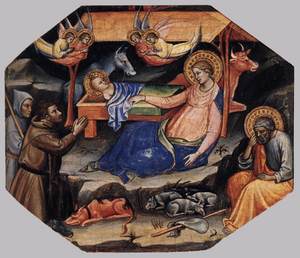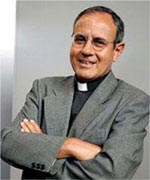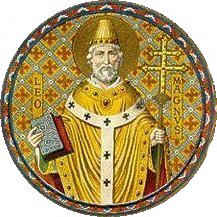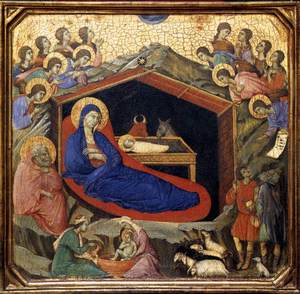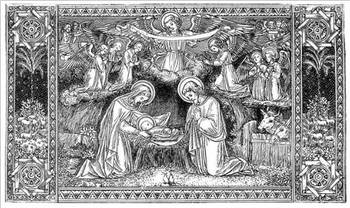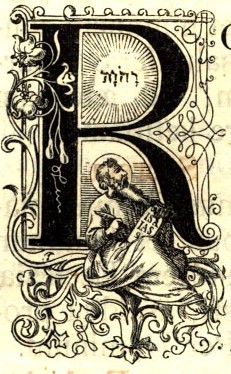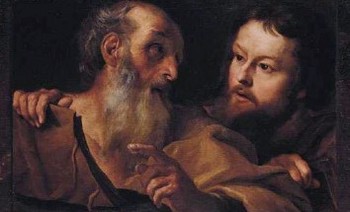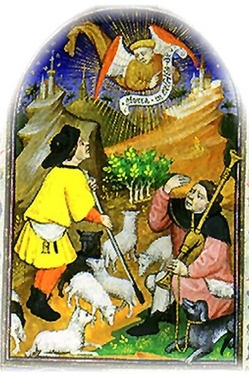Evangelizo vobis gaudium magnum: natus est vobis hodie Salvator, Christus Dominus.
I proclaim to you good news of great joy: today a Savior is born for us, Christ the Lord.
God, who gladden us by the yearly expectation of our redemption, grant that we may merit to see Your Only Begotten, our Lord, Christ Jesus, whom we in joy are now receiving as the Redeemer also see in safety when He is coming as the Judge.
Hodie Christus natus est. Hodie Salvator apparuit. Hodie in terra canunt Angeli, lætantur Archangeli. Hodie exsultant iusti dicentes: Gloria in excelsis Deo! Alleluia.
Today the Savior has appeared: today the Angels sing, the Archangels rejoice: today the just rejoice, saying: Glory to God in the highest, and on earth peace and good will towards men: Alleluia.
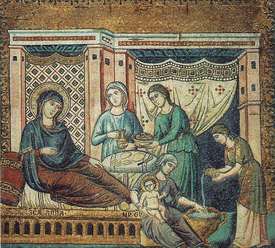 Today, the twenty-fifth day of December
Today, the twenty-fifth day of December
Unknown ages from the time when God created the heavens and the earth; And then formed man and woman in his own image.
Several thousand years after the flood; When God made the rainbow shine forth as a sign of the covenant.
Twenty-one centuries from the time of Abraham and Sarah;
Thirteen centuries after Moses led the people of Israel out of Egypt.
Eleven hundred years from the time of Ruth and the Judges;
One thousand years from the anointing of David as king;
In the sixty-fifth week according to the prophecy of Daniel.
In the one hundred and ninety-fourth Olympiad; The seven hundred and fifty-second year from the foundation of the city of Rome.
The forty-second year of the reign of Octavian Augustus; The whole world being at peace,
Jesus Christ, eternal God and Son of the eternal Father,
Desiring to sanctify the world by his most merciful coming,
Being conceived by the Holy Spirit,
And nine months having passed since his conception,
Was born in Bethlehem of Judea of the Virgin Mary.
Today is the nativity of our Lord Jesus Christ according to the flesh.
Amen.
